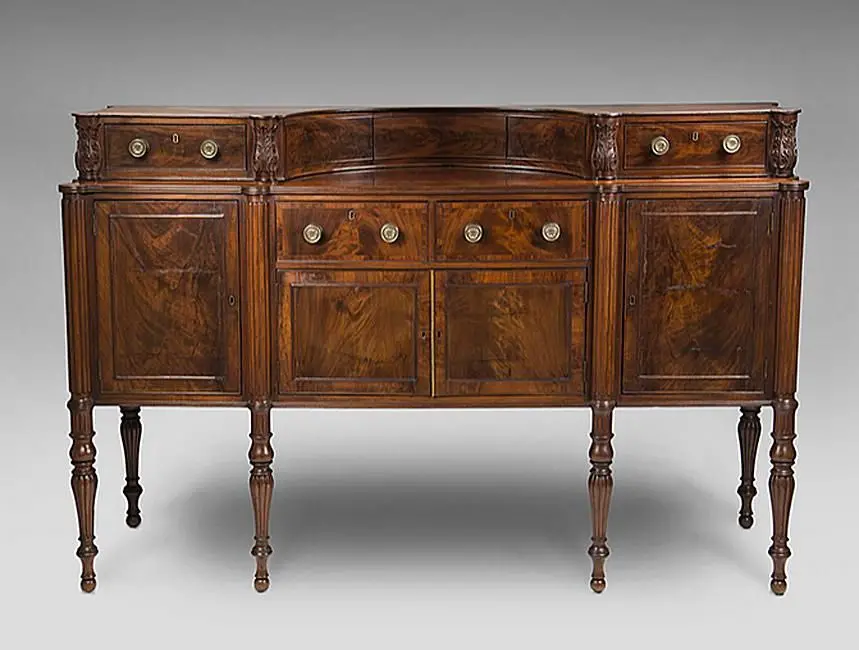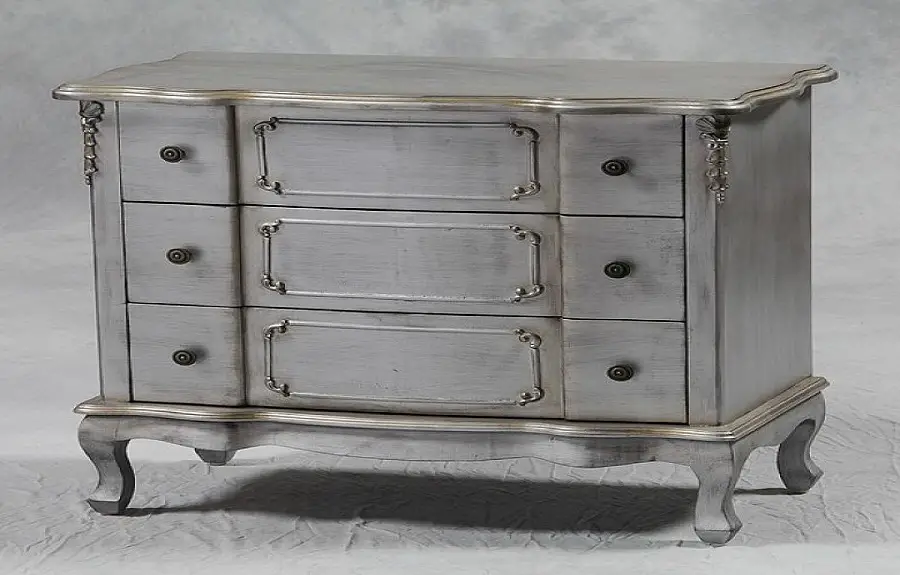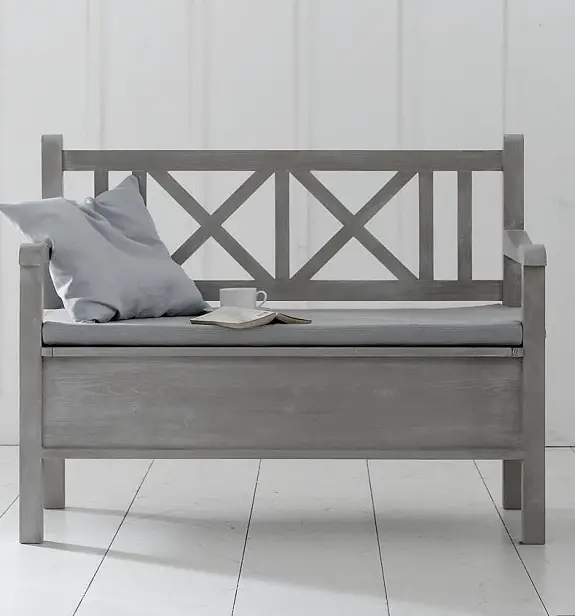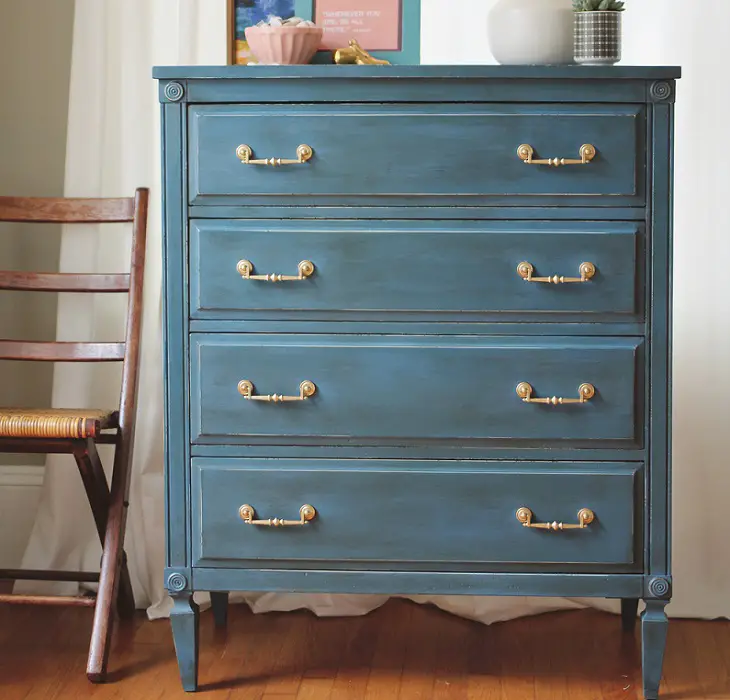Wood, both solid wood and veneer, has a unique design that often leads us to buy a piece of furniture. The pattern made of pores, color, mirrors, grain form the irreplaceable image of a piece of wooden furniture. So why paint wood? How can stained wood still be appreciated if we deprive it of one of its greatest assets - its design? There are many who would immediately say: you can't paint wood - end of story. And yet there are situations in which painting increases the value of wood. Let's take a look at these situations.
A brief history of furniture making
Don't panic, I won't start with dates and names. Just a few words about the wood used to make furniture.
Hundreds of years ago, furniture was made for the privileged classes and was specially decorated to match the palaces and castles it arrived in. The wood used was precious, brought from the colonies - mostly mahon - The wood was colorful and beautifully designed, and the pieces of furniture were true works of art.
Later, expensive and rare wood was replaced by more affordable wood. Species with distinctive designs were chosen - nuc, paltin, cherry, oak - with which famous designers of the time making special pieces for a privileged few. The rest of the people, however, lived on the bare necessities, with furniture sometimes non-existent.

With industrialization and the emancipation revolutions, a middle class emerged that turned furniture from art to necessity. Industrial manufacturing began, and the demand for wood steadily increased.
And so we come to the present day. The high demand for furniture led to the emergence of wood derivatives (PAL, MDF) also used to make furniture. Solid wood furniture was rightly placed above derived timber, becoming more expensive depending on the wood used. This led to the use of less spectacular species in terms of design and characteristics.
Situations when painting wood is a really good solution
But let's go back to when staining improves the wood and makes the furniture more valuable.
1. Wood without personality
Even species that were totally ignored in the past have come to be used to make furniture. This is the case poplar. It's a soft, even wood, and if it's grown on riverbanks it can also be full of sand. When you look at it unfinished, it doesn't convey much. It has a uniform yellowish-white color, with no characteristic pattern.
Furniture can be stained, and if special stains are used, interesting effects can be achieved. Indeed, poplar wood is not easy to stain and sometimes it stains, making it very difficult to get a uniform color. However, a lot of poplar furniture is made in walnut or cherry stains, which look good and are highly appreciated abroad.
However, there is also the option of having it painted and patinated. Staining does not hide the fact that the furniture is made of solid wood and covers it without any different absorption problems. The wood 'feels' under the paint coat and this increases the value of the furniture. In addition skates and special finishing techniques can make poplar furniture a great value.

2. Wood with defects
Sometimes wood has defects that are not accepted by the customer. There may be unsightly staining, too many or cracked knots, knot repairs or fiber pulling. It is still solid wood, however, and the fact that some people don't find it beautiful doesn't justify removing it. In this case too, a cleverly chosen, inspired finish will increase its value significantly.
A wood that can be classified in this category is resinous - spruce, fir or pine. There are many who don't appreciate a large number of knots or the yellowish color that becomes more pronounced over time. By covering it with paint, the flaws are hidden, but the fact that it's solid wood still shows through. Here too, patinas or other devices can be used to increase its value. An alternative that makes to make furniture unique is painting it.
The resinous wood has a slight difference between latewood and earlywood, and you can really feel the flames when you run your hand over them. This "play" of the wood is emphasized if a patina (wax) is applied over the paint. If a cream paint is used and the patina only highlights the design, an unfamiliar person will not even realize that the furniture is painted.


3. Old solid wood furniture
Even if it is solid wood, there are situations when we would like to change something about the old furniture we have, because it is too dark in color, it looks old-fashioned, it doesn't match the new decor or other such reasons. Unfortunately, there are situations when we choose to give up such furniture made of solid wood and opt for modern furniture made of MDF, veneered chipboard or plastic.
An old piece of furniture can be transformed by painting it to perfectly match the new style. A light paint can radically change it, while patinating with wax, stenciling or painting can make it the centerpiece of the room.

In conclusion
Solid wood is a value in itself, and wooden furniture should be appreciated whether the wood grain is visible or not. Each can bring beauty and elegance to our homes. Transparent furniture, where the wood grain is visible, is distinguished by the unique design of the wood. Stained does not completely hide the wood. It is "felt" under the layer of paint, which brings its own beauty.





































I agree completely!